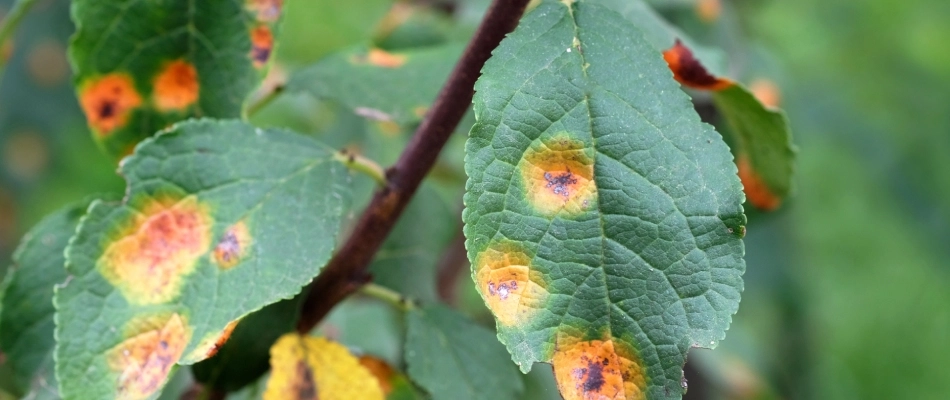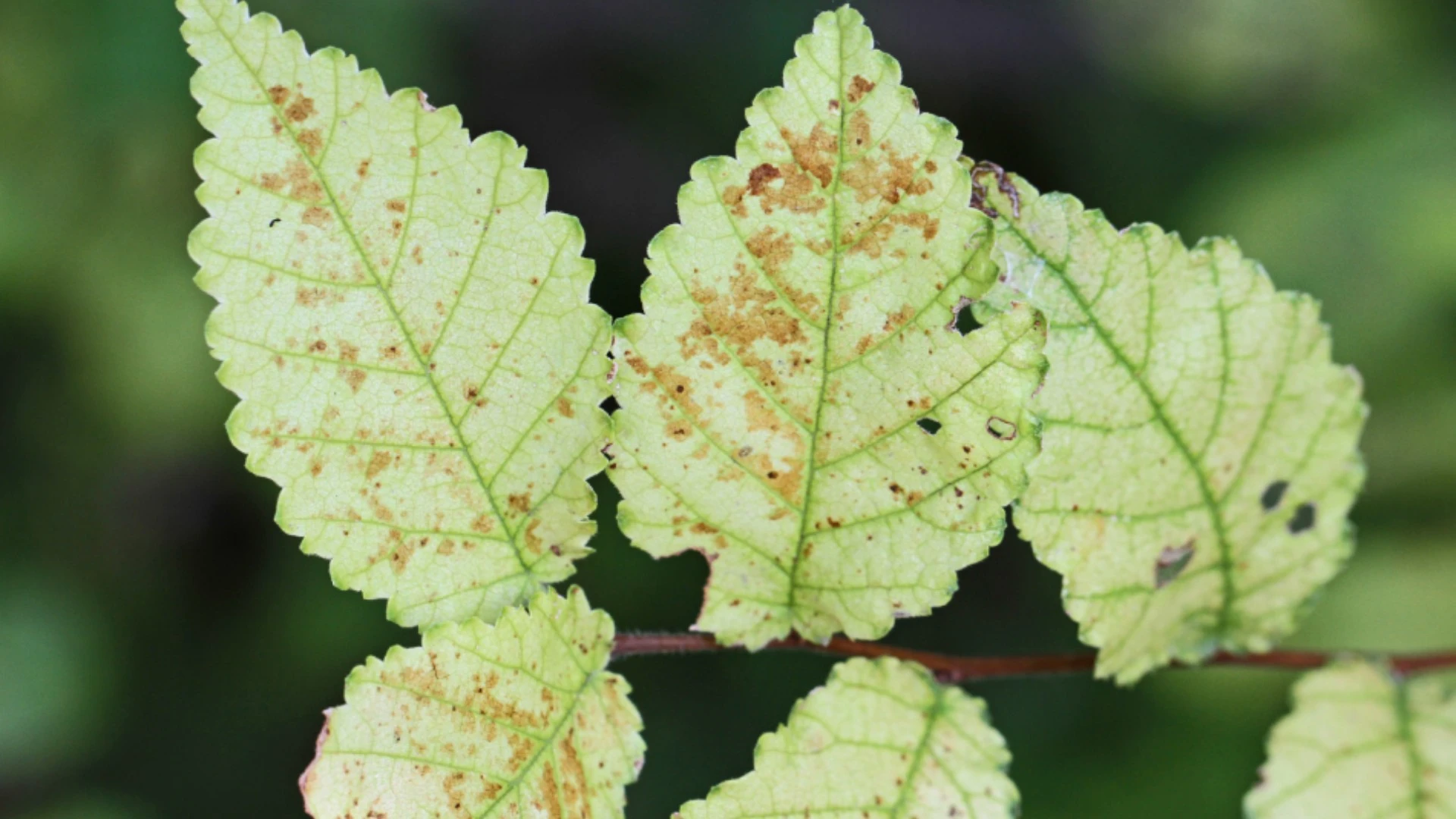Finding illness or disease in your trees is not pleasant. Although some are harmless and only affect the outward appearance, others can be serious and require the expertise of a trained landscaping professional to treat. Here in Ohio, there are four tree diseases property owners should watch out for. These include needlecast, powdery mildew, thousand cankers disease, and cedar apple rust.
Securing the assistance of an experienced landscaping professional is a major factor in stopping further disease spread. It also helps if you know how to identify the symptoms of these four tree diseases, so you know when to seek help.
1. Needlecast
Needlecast is a serious disease that infects spruce trees. This condition causes the needles to turn brown before falling off. In severe cases, this illness can lead to the death of your tree.Causes of needlecast - Rhizosphaera and several other tree fungi cause needlecast. The condition spreads through wind and rainfall, which carry the tree fungi from one spruce to another. Needlecast thrives in damp, cramped environments that make it easy for spores to find new trees. This tree illness attacks trees that experience stress due to drought or heavily compacted soil.
Symptoms of needlecast - You won't notice it immediately as symptoms take 2 to 3 years from infection to become visible. However, when symptoms emerge, you may see a series of light green and sometimes yellow spots on the needles of the infected tree. As the disease progresses, the needles change from yellow to red or brown, moving from the tips of the needle to the branches before making its way to new needles. At the end of the cycle, the needles fall from the tree.
When needlecast occurs - Needlecast happens in May and June. You may not notice it until fall or the following spring.
Treating needlecast - Your landscaping professional can treat needlecast by spraying a fungicide containing chlorothalonil. They will likely target the fungus when the spruce needles are relatively young, from 1/2 to 2 inches long. They often spray twice in the spring and then move to a monthly schedule.
2. Powdery Mildew
Powdery mildew is a tree-borne fungal disease that infects trees in the Ohio region. It causes powdery spots to appear on leaves and stems.
Causes of powdery mildew - This tree condition is caused by various fungi and occurs when millions of small fungal spores called conidia land on trees. It often occurs in areas containing minimal airflow.
Symptoms of powdery mildew - The disease can be identified by a fine white substance or blanket covering the leaves of trees. Some describe it as closely resembling baby powder, and it usually appears on new leaves. Over time as it develops, the white covering gives way to yellow, wilting leaves and branches that eventually die.
When powdery mildew occurs - Infections occur in Ohio trees during the fall, but symptoms don't present until April or May.
Treating powdery mildew - Ensuring adequate air circulation is useful in preventing this disease. If caught early enough, professionals can treat powdery mildew by spraying a potassium bicarbonate-based fungicide.
Powdery mildew disease thrives when the weather is between 70 to 80 degrees Fahrenheit.
3. Thousand Cankers Disease
Thousand cankers disease is a newly discovered condition first recorded in 2010. The illness targets walnut trees and often results in their death.
Causes of thousand cankers disease - While the actual cause of thousand cankers disease is a tree fungus known as Geosmithia morbida, it's spread by walnut tree beetles that carry the virus. These beetles make their homes behind the bark of walnut trees and spread the disease while tunneling beneath the tree's surface to eat the bark.
Symptoms of thousand cankers disease - This disease is not easy to diagnose as it can be faint. However, if you notice the presence of tiny yellowish-brown beetles roughly the size of a flea on your walnut tree, this could be an early warning sign. Other signs include wilting yellow leaves, dead limbs on top of infected trees, and dead leaves that remain attached to the tree.
When thousand cankers disease occurs - The beetles emerge from winter slumber and burrow through branches in the spring. Symptoms usually start to show from mid-summer to fall.
Treating thousand cankers disease - While there is no known cure for the disease, landscape companies like ours offer tree and shrub fertilization programs that include insect and disease control treatments. These programs are important to enroll in to prevent these incurable diseases from reaching your vegetation.
4. Cedar Apple Rust

Cedar Apple Rust is a fungal disease found in both red cedar and apple trees. It's unique, as it can only bloom when spores from red cedar infect an apple tree and vice versa.
Causes of cedar apple rust - Infection is caused by a fungus known as Gymnosporangium juniperi-virginianae. Every year spores from this fungus go airborne in the spring. Although it can't spread to and from the same tree species, if cedar and apple trees are planted near one another, they're susceptible.
Symptoms of cedar apple rust - This disease presents itself as yellow leaf spots that turn red on apple trees. The leaves also develop small black dots in the center of leaf spots. As the condition progresses, it causes finger-like tubes to grow beneath leaf spots. These growths also develop on the apple and can significantly reduce fruit yield. On cedar trees, the illness presents itself as growths or plant galls that grow on twigs. In time these galls develop horns and become gelatinous.
When cedar apple rust occurs - Cedar apple rust symptoms begin appearing in the spring months. The disease thrives in humid and rainy weather.
Treating cedar apple rust - As a preventative measure, pros can apply a sulfur fungicide. Many landscaping experts advise treating apple trees rather than cedars as the disease is more damaging to apple trees.
Stop tree-borne illnesses in their tracks. Call us today!
While tree-related illnesses can sound overwhelming, it's possible to take preventative steps that stop them from occurring on your property. The key is to exercise vigilance and work with a tree care provider who can help keep these tree-borne illnesses from coming into contact with your trees. That someone is us! We offer our services to property owners in Mansfield, Ashland, Wooster, and surrounding areas in Ohio.
So, if you haven't begun taking steps to protect your trees from these four common diseases impacting trees in Ohio, we can help. Our tree and shrub care program is designed to help property owners ward off tree disease. Contact us today at (419) 528-5698 to enroll.



Comments (0)
Thanks for your comment!
Thanks for your feedback! Your comments have been successfully submitted! Please note, all comments require admin approval prior to display.
Error submitting comment!
There is a problem with your comment, please see below and try again.